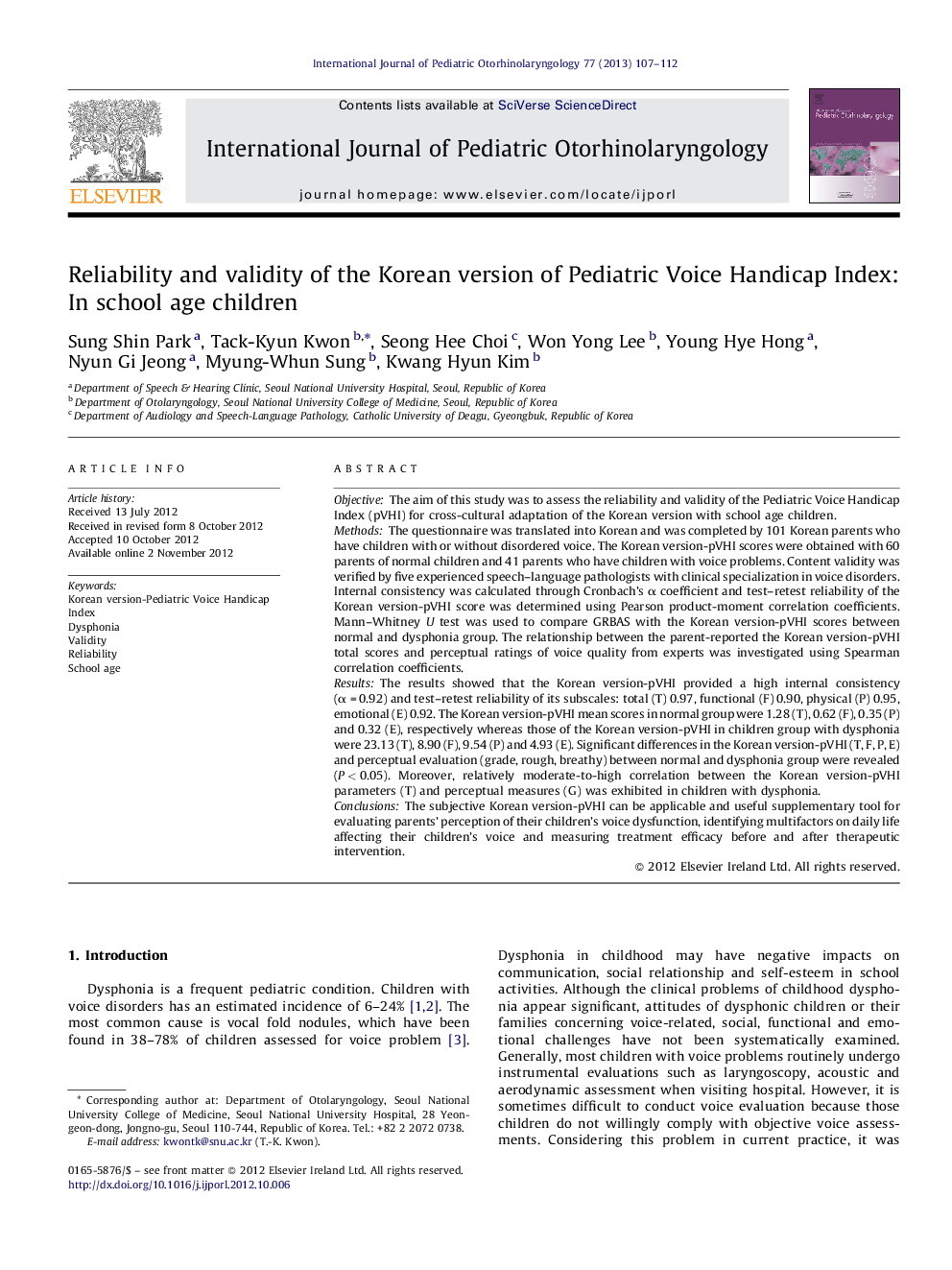| کد مقاله | کد نشریه | سال انتشار | مقاله انگلیسی | نسخه تمام متن |
|---|---|---|---|---|
| 6214012 | 1606024 | 2013 | 6 صفحه PDF | دانلود رایگان |
ObjectiveThe aim of this study was to assess the reliability and validity of the Pediatric Voice Handicap Index (pVHI) for cross-cultural adaptation of the Korean version with school age children.MethodsThe questionnaire was translated into Korean and was completed by 101 Korean parents who have children with or without disordered voice. The Korean version-pVHI scores were obtained with 60 parents of normal children and 41 parents who have children with voice problems. Content validity was verified by five experienced speech-language pathologists with clinical specialization in voice disorders. Internal consistency was calculated through Cronbach's α coefficient and test-retest reliability of the Korean version-pVHI score was determined using Pearson product-moment correlation coefficients. Mann-Whitney U test was used to compare GRBAS with the Korean version-pVHI scores between normal and dysphonia group. The relationship between the parent-reported the Korean version-pVHI total scores and perceptual ratings of voice quality from experts was investigated using Spearman correlation coefficients.ResultsThe results showed that the Korean version-pVHI provided a high internal consistency (α = 0.92) and test-retest reliability of its subscales: total (T) 0.97, functional (F) 0.90, physical (P) 0.95, emotional (E) 0.92. The Korean version-pVHI mean scores in normal group were 1.28 (T), 0.62 (F), 0.35 (P) and 0.32 (E), respectively whereas those of the Korean version-pVHI in children group with dysphonia were 23.13 (T), 8.90 (F), 9.54 (P) and 4.93 (E). Significant differences in the Korean version-pVHI (T, F, P, E) and perceptual evaluation (grade, rough, breathy) between normal and dysphonia group were revealed (P < 0.05). Moreover, relatively moderate-to-high correlation between the Korean version-pVHI parameters (T) and perceptual measures (G) was exhibited in children with dysphonia.ConclusionsThe subjective Korean version-pVHI can be applicable and useful supplementary tool for evaluating parents' perception of their children's voice dysfunction, identifying multifactors on daily life affecting their children's voice and measuring treatment efficacy before and after therapeutic intervention.
Journal: International Journal of Pediatric Otorhinolaryngology - Volume 77, Issue 1, January 2013, Pages 107-112
